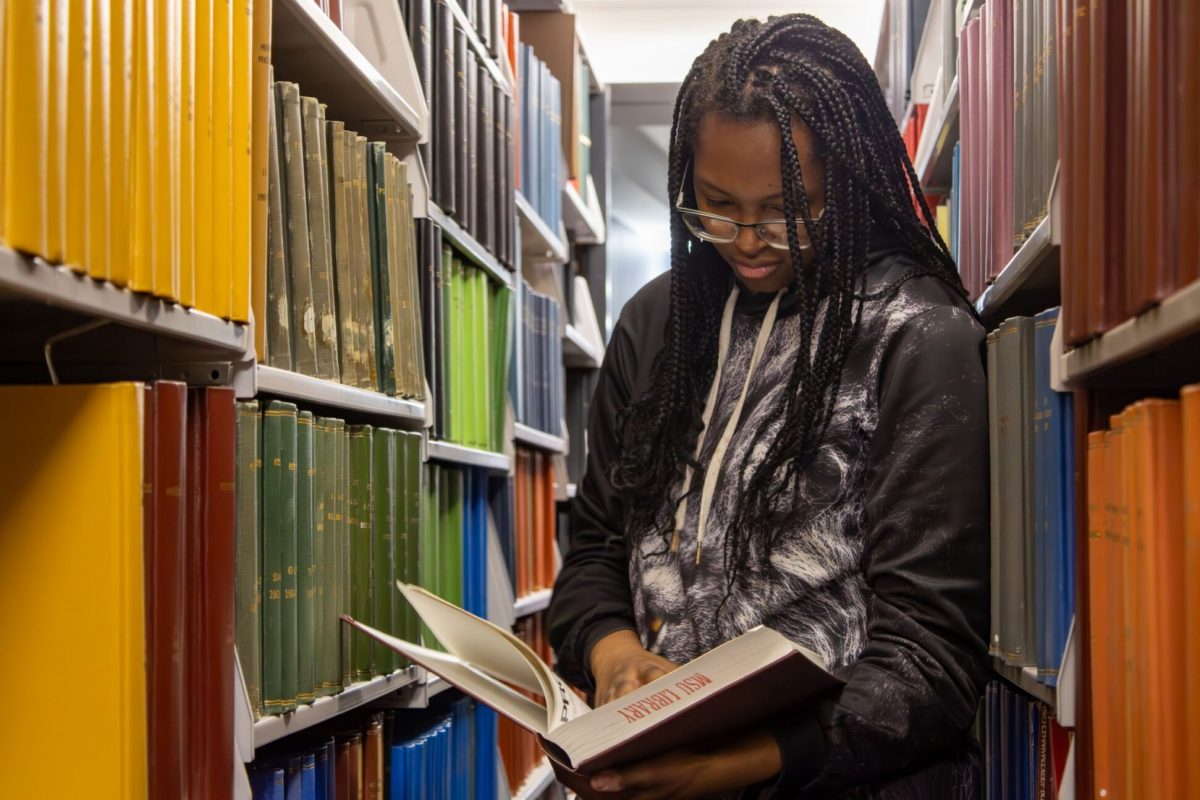
Haylee Morman
When I was younger, I used to go to my local library and pick out books like “Harry Potter,” “Percy Jackson” and “Diary of A Wimpy Kid.” But as time went on, I started going less, as I was packed with more responsibilities. The few times I found myself at a library, it was to sit down and study.
In the past, libraries’ primary purpose was to provide the public with free access to books and information. However, these days it appears that people are using libraries for different purposes. Despite the huge arrays of bookshelves in libraries, people are no longer there to check out books.
Take a look at Mississippi State University’s own Mitchell Memorial Library, a five-story building that is equipped with not only books, but study rooms, printers, administration rooms and conference areas. This library has become its own ecosystem that serves the student body as a quiet place that allows them to study and recharge in their off hours.
A 2015 Pew Research Survey found that from 2012 to 2015, among those who said they had been to the library in the last 12 months, there was a gradual decline in individuals who said they borrowed a book during that library visit. In Mississippi alone, state libraries saw a 43% decline in materials being checked out from the library between 2018 and 2022, with a slight rebound from the pandemic.
It is evident that after the pandemic and the general massive digitization of everything, libraries and the original purposes they used to serve are becoming more obsolete. No one checks out a book to read anymore if they can just consume the information from a 15 second YouTube short.
Kamden Kratz is a freshman majoring in biochemistry at MSU. Instead of using the library to check out books, Kratz said he uses the library’s study spaces as a quiet place to plan out his week or work on school assignments.
Libraries serve beyond their original purpose. But, do they still serve their original purpose? Nowadays, it is a rare sight to see a student reading a book at the library. Instead, most are similar to Kratz and use the library to complete assignments and study for tests.
It is important to revisit libraries and our childhood memories of them. Libraries used to serve as a fount of free information and a bridge for equality, such as providing the public with literacy classes, after-school programs, resume feedback and technology resources. But even then, libraries also served as a platform for our community. In my hometown library, the librarians hosted multiple book events where they would give awards to kids for reading a certain number of books. It was a small effort in the grand scheme, but it impacted and encouraged children to become avid readers.
Events like this promote literacy, exploration and curiosity. Sure, while consuming a ten-minute video explaining Shakespeare’s life could be more efficient, actually actively reading his content or reading a biography provides a richer experience that puts the reader within the same mind of the great playwright.
Understandably, it can be important to expedite the learning process. Consider the responsibilities of a college student, for instance. Reading an 800 page novel for an essay is not the same as writing after simply reviewing a summary. Therefore, educators and especially libraries need to figure out ways to bridge that gap, like providing access to scholarly databases such as EBSCO to promote learning and studying through media consumption.
If you are a student and are already reading this article, you represent a relatively small percentage of students who read the student newspaper regularly, according to a survey conducted by Buday Thought Leadership Partners. It is truly a rare sight to see a general enjoyment of literature. But with our constantly busy environment, will students ever find time to sit down and actually enjoy a book at our libraries? Only the future will tell.
